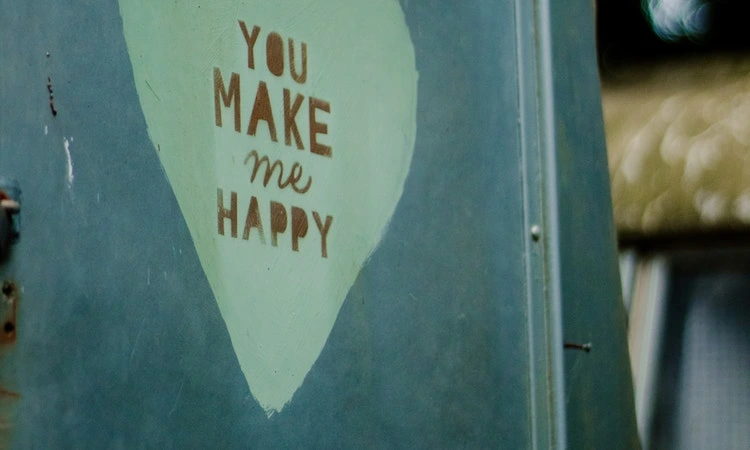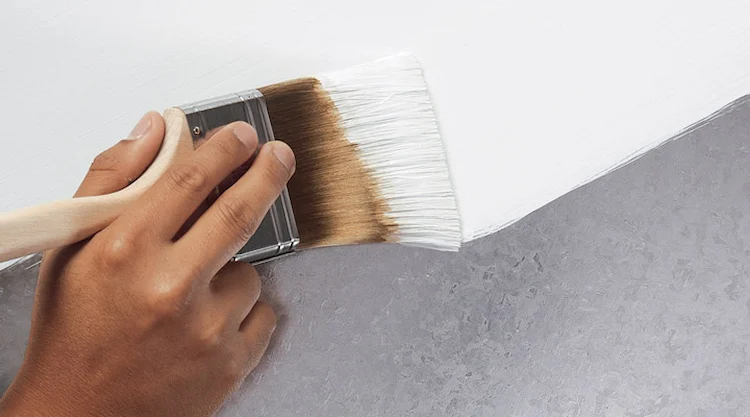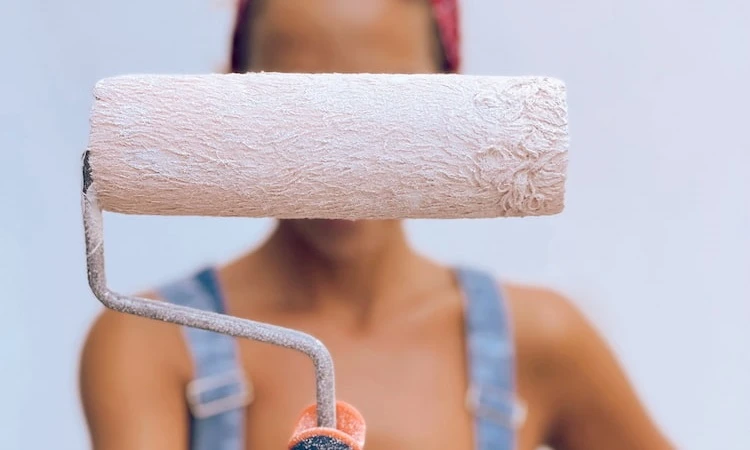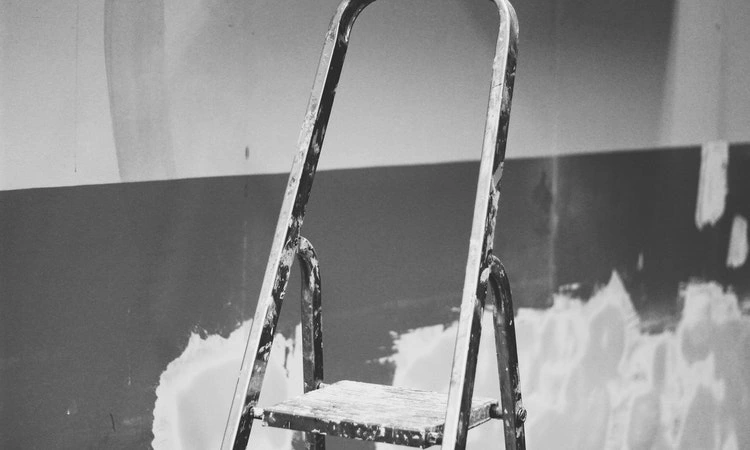Are you interested in upcycling shiny metal decor from home goods stores?
Do you have some kind of galvanized metal around the house that you are tired of staring at? Maybe it’s the steel rails on your stairs or the steel bench in your backyard.
Regardless of what you think about painting, I will explain how you can paint galvanized metal.
Some say that galvanized metal cannot be painted. Technically, they are right. Galvanized metal needs to be prepped before it can be painted otherwise the paint will chip and peel.
Galvanized metal has a zinc coating that prevents the paint from adhering to the surface.
I will tell you how to get rid of that obstacle to create the beautiful masterpiece you have in mind. In this article, I will explain how to prep galvanized metal for painting.
I will also mention a few other important things about painting galvanized metal.

Can You Paint Galvanized Steel?
The process of galvanization involves dipping steel or metal into zinc.
Manufacturers do this because zinc provides a uniform protective surface on the metal that resists corrosion. However, this layer of zinc also prevents the paint from properly adhering to the steel.
Galvanized steel can be painted, but there are a few steps you will have to complete before painting the steel.
Otherwise, your paint will begin to chip and peel within a few days. Below I will outline the steps you need to follow for the paint to adhere properly.
How Do You Prep Galvanized Steel Before Painting?
It is vital that you prep galvanized steel before painting it. The only way that paint will adhere to the steel is by prepping it.
The prepping process involves 3 easy steps that I have described below.
Step 1.
Before you can do anything to the galvanized steel, you must clean its surface.
If the galvanized steel has been exposed to the elements or has any kind of sticky residue on it, you will want to remove that.
You can use a warm soapy water solution to remove any dirt and debris from the metal. Additionally, a soft sponge can help scrub off any big chunks of debris.
You will need to thoroughly rinse the galvanized metal after scrubbing off any debris.
If the galvanized steel has a residue that will not come off with soap and water, you can try mineral spirits.
The mineral spirits should sit on the steel for a few minutes before wiping it off. Then clean the material again with warm water and soap.
Allow the galvanized steel to dry fully before continuing to the next step. When working on small projects, you can use a hairdryer to speed up the drying time.
Step 2.
If the galvanized steel is shiny or smooth, you should use fine-grit sandpaper to sand down the surface. You can use 220-grit sandpaper.
This is recommended because it dulls the surface and will allow the paint to adhere to the steel better.
If you believe the galvanized steel is already dull, you should still sand it down. Using very fine-grit sandpaper is not going to damage the steel.
Instead, it will remove small impurities that you may not see, and it will allow the paint to adhere better.
Apply steady and even pressure when sanding the galvanized steel. You do not want to over-sand the material, but you want it to be smooth enough for the paint to adhere.
After sanding down the surface, you can use a tack cloth to remove debris and dust.
Step 3.
You will need white vinegar for this next step. The acidity in white vinegar reacts with the galvanized metal and allows the paint to adhere to it.
This is a cost-effective and safer option than many harsh solvents.
You can use a dry cloth to apply the white vinegar to the galvanized metal.
You do not need to soak the object; a little white vinegar will go a long way. Once the vinegar is dry, your galvanized steel is ready to be primed and painted.
Can You Use Ammonia Instead of White Vinegar?
Ammonia is acidic and can be used as a substitute for white vinegar.
I recommend using white vinegar because it is cheaper, and you are more likely to have it lying around your house.
Additionally, ammonia needs to be used in a well-ventilated area. If you are working on a big project outside, by all means, use ammonia.
You will need the proper PPE when working with ammonia. Gloves and eye protection are common safety precautions for working with ammonia.
Do You Need to Prime Galvanized Metal Before Painting?
Since many paints do not adhere well to galvanized metal, you should always use a primer.
A primer gives the paint something to adhere to and can prevent the paint from peeling off easily.
The primer should be applied immediately after cleaning and sanding the galvanized metal. The zinc on galvanized metal is constantly reacting to the environment around it.
The longer the metal sits out without primer, the less likely the paint will adhere properly to it.
What Primer Should You Use on Galvanized Metal?
Rust-preventing primer is the best kind of primer to use on galvanized steel. Avoid oil-based primers.
You should use the same brand of primer that you are going to use for the paint. This can decrease the risk of the galvanized steel reacting to the paint and primer.
I recommend ZRC 10002 Cold Galvanizing Compound primer for galvanized metal.
It is designed to prevent rust and corrosion, and it is very easy to apply. This primer is tinted gray which makes it a great primer for any color you choose.
What Kind of Paint Can Be Used on Galvanized Metal?
Acrylic paints are the best kind of paint to use on galvanized metal. Oil-based passed will initially adhere to the metal, but they will eventually peel.
This occurs because the zinc of the galvanized steel interacts with the chemicals in the oil paint.
Some oil-based and alkyd paints will be advertised as working on galvanized metal. I would still stay away from those paints. Water-based or acrylic paint is going to be the best for galvanized metal.
You should look for water-based or acrylic paint that is meant for metal. You do not have to find one that is specific for galvanized metal.
Any metal-specific paint will be the best product for painting galvanized metal.
How to Paint Galvanized Metal Properly

Galvanized metal can be painted and look good if done properly. You should follow the above-mentioned steps for prepping the metal (cleaning, sanding, and applying vinegar).
With the prepped metal, you can begin to apply the primer. Primer is not a necessary step, but it is recommended as it will help the paint adhere better and last longer.
Some primers will require more than one coat. Follow the manufactures label to determine how many coats of primer should be applied.
Allow the primer to dry fully before painting the surface.
Once the galvanized metal is primed, you can begin painting. You can use spray paint or acrylic paint to paint the metal.
The best paint is going to be designed for galvanized metal and water-based.
Whether you use a roller or a brush to apply the paint will depend on the type of paint you use.
Read the manufactures label to determine how to apply the paint. The label should also tell you how many coats of paint you need to apply.
Can You Remove Paint From Galvanized Steel?
Did you paint your galvanized steel and do not like the way the color looks? Or has your taste in decor changed since painting the furniture?
It is not an easy process, but you can remove paint from galvanized steel.
Paint stripper, ammonia, and rubbing alcohol can all be used to remove the paint. All three options will require a lot of elbow grease and caution.
They also all require PPE. At a bare minimum, you should be wearing gloves and in a well-ventilated room when using any of these products.
Start by applying small amounts of the solvent of your choice. Rubbing alcohol is probably the most common item you already have lying around the house.
It is possible to damage the metal when removing the paint. It mostly depends on how thin the metal is and how many solvents you use.
After the paint begins to bubble or peel, you can use a paint scraper or sponge to remove the old paint.
Once the paint is removed, you can prep and repaint the surface as previously outlined.
You should not leave the metal out for too long without a protective covering. The metal reacts to oxygen and other environmental elements and can become weak.
Therefore, it should be repainted relatively quickly after removing the old layer of paint.
FAQs: Painting Galvanized Metal
By now, you should have a general idea of how to paint galvanized steel. But are you curious about what kinds of paint you can use, whether you can paint rusted steel and more?
Then keep reading below as I answer a few of the frequently asked questions about painting galvanized steel.
1. Can You Spray Paint Galvanized Steel?
Galvanized steel can be spray painted. You should look for water-based paint that is designed specifically for metal.
The galvanized steel will still need to be prepped by cleaning and sanding it before spray painting. Whether you need a primer or not will depend on the type of spray paint you use.
If the spray paint is designed for galvanized metal, you do not have to apply a primer before painting.
Any other water-based spray paint will require priming to help the spray paint better adhere to the metal.
Remember that if you do not use a primer, you will have to apply multiple coats of paint.
Spray paint is a thin paint that must be applied in thin layers. You will save time using a primer before painting the galvanized steel.
2. Can You Paint Galvanized Pipe?
Galvanized piping can be a bit trickier to paint, but not impossible. You will follow the same steps as outlined at the beginning of the article.
You will need to clean the pipes, sand them, and prep them with white vinegar.
It is easier to paint galvanized pipes if installed, as it can be hard to roll the piping around for full paint coverage.
Another option is to run a string through the piping and hang them horizontally. This will give you access to all sides of the piping.
If neither of those is an option, you can spray the paint on one side and let it dry before moving to the other side to paint it.
Or if you are using a paintbrush or roller, you still paint one side before moving to the other side. This method helps prevent the paint from dripping and developing streak marks.
3. Can You Use Chalk Paint on Galvanized Metal?
Maybe you have a lot of extra chalk paint lying around, or maybe you love the matte finish of chalk paint.
No matter your reasoning, chalk paint can be used on galvanized metal. Chalk paint will adhere to galvanized metal because it is a water-based paint.
Chalk paint has become very popular over the last several years because it can be painted on almost any surface and is easy to use.
Normally, using chalk paint requires no prep work. However, when painting galvanized steel, you always need to clean, sand, and apply vinegar to the metal.
Then apply the chalk paint. You can use chalk spray paint or paint that has to be applied with a brush or roller.
4. Can You Create a Rustic Look By Painting Galvanized Metal?
Are you in love with the chic farmhouse trend of having worn and distressed galvanized metal furniture or decor?
Are you wondering if you can achieve the look yourself instead of paying a crazy amount for it?
Well, you are in luck because chalk paint can be used to create a rustic look on galvanized metal.
All you have to do is prep, prime, and paint the metal as normal. Once the paint has dried, take fine-grit sandpaper to the object.
Be careful not to remove too much paint. The distressed look comes through because you are essentially scraping off some of the pigmentations.
With this method, you can control how stressed the furniture is and where you want the most wear and tear to be shown.
5. Can You Paint Rusted Galvanized Steel?
Of course, you can paint rusted galvanized steel. However, you should remove the rust before painting the steel.
Rust can bleed through the paint no matter how many coats of it you apply to the galvanized steel.
Rustoleum does have spray paint that reportedly stops rust in its tracks.
They advertise that you do not need to sand the material before painting, but I would not do that. Sanding removes rust, but it also creates a smooth surface for the paint to adhere to.
Galvanized steel is already known for being difficult to paint. Do not make it harder on yourself by not sanding the rust off.
I would sand down the rust, apply a product that stops rust, and then sand down the metal again.
By sanding down the metal a second time, you remove any harsh bumps or blemishes that may have formed from the rust-stopping product. Then you can paint it like any other piece of galvanized steel.
6. Will Painted Galvanized Metal Rust?
Theoretically, painted galvanized steel can rust just like any other metal. Galvanized steel is dipped in zinc to prevent rusting.
When you paint galvanized steel, you have to remove some of the zinc coatings for the paint to adhere to the metal.
It may sound like you are removing a protective layer from the steel, and in reality, you are. However, painting galvanized steel can increase its lifetime.
How does paint increase steel’s lifetime? Paint adds an extra layer of protection against the environment.
So while you remove some of the zinc coatings, the paint adds another layer of protection for the steel. You can even use paint that prevents rust.
As previously mentioned, Rustoleum has spray paint that stops rust in its track. They also have a line of paints that can prevent rust.
These paints are great for outdoor furniture or any galvanized metal that will be exposed to the elements.
7. Should You Paint Your Galvanized Steel?
This is more of a personal question. If you do not like the shiny look of the metal, you may want to paint it to something more pleasing to your eyes.
There are a couple of advantages to painting galvanized metals.
These metals are already considered durable, but painting them increases that durability as a layer of paint adds more protection against the outside elements.
I believe that painting galvanized steel helps add some personality to any environment.
Plus, it can be a cool talking piece. Imagine how impressed your friends would be after seeing before and after photos.
8. What Galvanized Metal Objects Can You Paint?
I am so glad you asked this question. The options an endless. You can paint buckets as planters, kids’ toy bins, farmhouse decor, and more.
Those giant round and shiny metal planters at the home improvement store can also be painted.
The shiny metal is not everyone’s style, but galvanized steel can be painted any color to show your personality. Just take a look at these planters for rustic and modern inspiration.
You can even paint galvanized metal stair rails. What if the stair rails are already painted, but you do not like the color?
You can remove the paint and repaint it with a color that better matches your taste.
Verdict
Galvanized steel is not the most pleasing thing to look at. Whether your roof, garden bench, or decorations are made of galvanized steel, you can paint them.
Painting galvanized steel is super easy. It is the prep work that can be time-consuming and daunting.
The zinc coating on the metal prevents the paint from adhering to it. Therefore, the zinc coating has to be sanded down.
The steel also needs to be treated with white vinegar. The vinegar is acidic and will form a reaction when it contacts the steel. This reaction allows the paint to adhere better to the metal.
If you do not do this step, your paint could peel and bubble within days.
One of the best things about painting galvanized steel is that you can use almost any type of paint. The paint does have to be water-based, but you can use spray paint or paint that needs to be rolled or brushed on.
Both Chalk paint and spray paint work beautifully on galvanized steel.
The best spray paint is one that is designed for metal. It is even better if the paint is designed specifically for galvanized metal.
If you have some metal furniture or decor that you want to give a facelift, then go ahead. The process is surprisingly simple as long as you follow the steps I previously outlined.
A coat of paint will increase the metal’s life and give you a masterpiece to marvel at.



